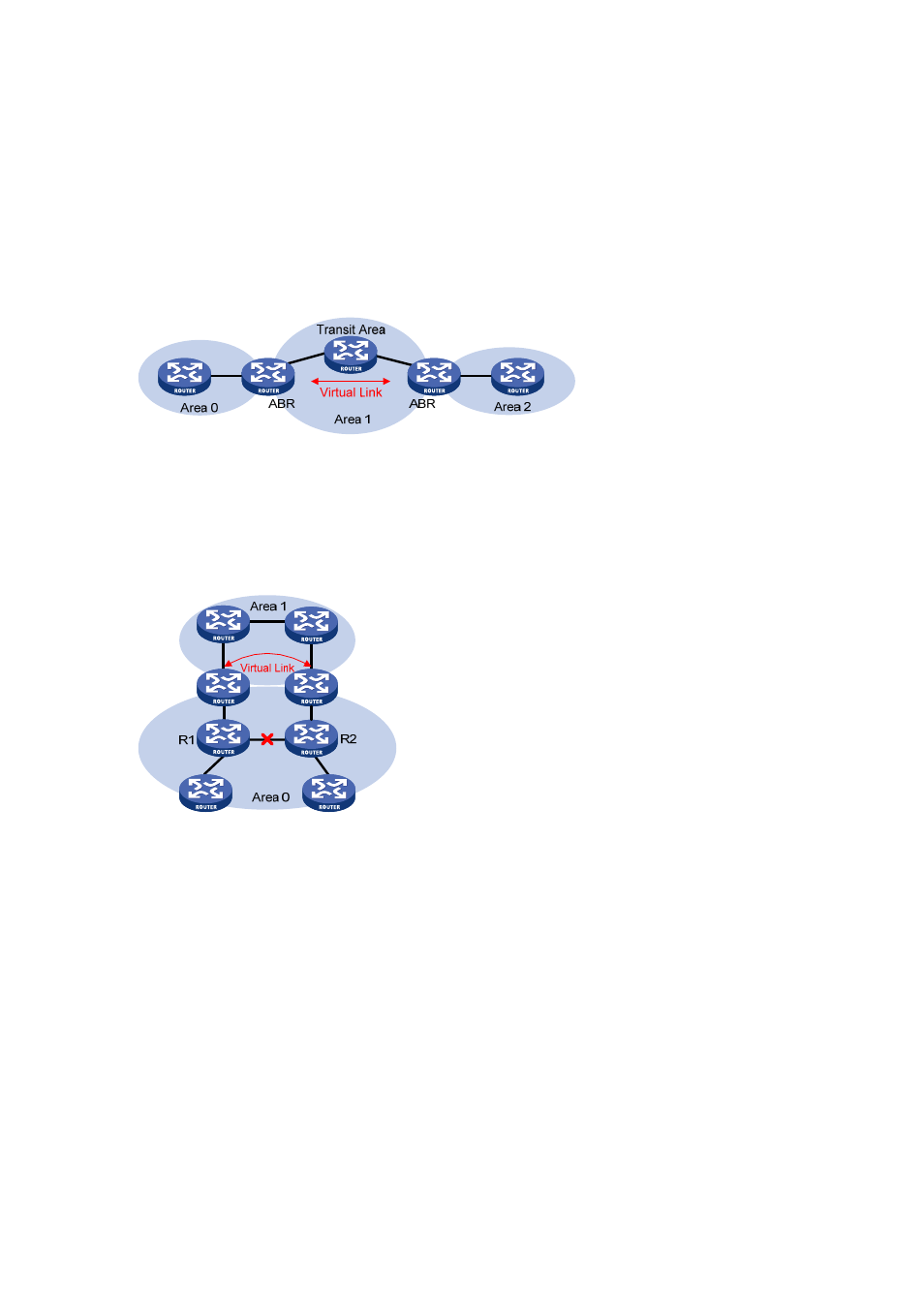Totally) stub area – H3C Technologies H3C S3600 Series Switches User Manual
Page 333

4-6
In practice, due to physical limitations, the requirements may not be satisfied. In this case, configuring
OSPF virtual links is a solution.
2) Virtual
link
A virtual link is established between two area border routers through a non-backbone area and is
configured on both ABRs to take effect. The area that provides the non-backbone area internal route for
the virtual link is a “transit area”.
In the following figure, Area 2 has no direct physical link to the backbone area 0. Configuring a virtual
link between ABRs can connect Area 2 to the backbone area.
Figure 4-3 Virtual link application 1
Another application of virtual links is to provide redundant links. If the backbone area cannot maintain
internal connectivity due to a physical link failure, configuring a virtual link can guarantee logical
connectivity in the backbone area, as shown below.
Figure 4-4 Virtual link application 2
The virtual link between the two ABRs acts as a point-to-point connection. Therefore, you can configure
interface parameters such as hello packet interval on the virtual link as they are configured on physical
interfaces.
The two ABRs on the virtual link exchange OSPF packets with each other directly, the OSPF routers in
between simply convey these OSPF packets as normal IP packets.
(Totally) Stub area
The ABR in a stub area does not distribute Type-5 LSAs into the area, so the routing table scale and
amount of routing information in this area are reduced significantly.
You can also configure the stub area as a Totally Stub area, where the ABR advertises neither the
routes of other areas nor the external routes.
Stub area configuration is optional, and not every area is qualified to be a stub area. In general, a stub
area resides on the border of the AS.
The ABR in a stub area generates a default route into the area.
